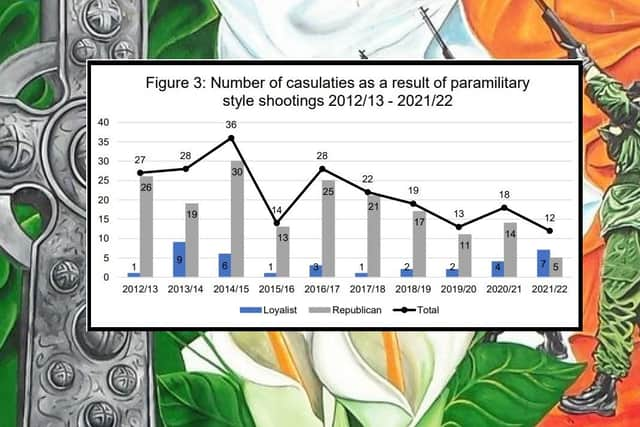Report into paramilitarism in Northern Ireland declines to mention any paramilitaries - but says there should be a special effort made to coax remaining groups away from terror
and live on Freeview channel 276
That makes it the third annual report in a row from the Independent Reporting Commission (IRC) not to name a single outlawed organisation.
This is quite different to the Independent Monitoring Commission (IMC), which was like a forerunner to the present-day IRC.
Advertisement
Hide AdAdvertisement
Hide AdThe IMC ran from 2004 to 2011, and its final report mentioned the UVF and UDA 16 and seven times respectively, and the PIRA and INLA 49 and three times, giving evaluations of what each group was up to.


The IRC by contrast talks in general terms about the security situation, as opposed to shining a light on specific organisations.
Asked why it takes this tack, it told the News Letter yesterday: "The IRC is not an assessment body and has no operational role, and does not make detailed security or threat or status assessments of the various paramilitary groups."
The IRC’s 2022 report (published on Wednesday afternoon) also re-states a key recommendation its authors had made a year earlier: namely, that dialogue with paramilitary groups is needed to encourage them to disband.
Advertisement
Hide AdAdvertisement
Hide AdAs the 2021 report put it: “Some believe that a process of engagement to bring about group transition is no longer appropriate or feasible, and that disbandment is a matter purely for the police and justice systems – [but] our analysis leads us to a different view”.
The 2022 report repeats the call for “a process of engagement with paramilitary groups themselves with a view to group transition and disbandment... working in parallel with the twin tracks of a policing and criminal justice response and addressing the socio-economic challenges of the communities concerned”.
It said this should be “overseen by a formal body established for that purpose by the two Governments”.
It also suggests appointing “an independent person who would be authorised to speak to the various interested parties, including the paramilitary groups themselves, to gather their views”.
More from this reporter:
Advertisement
Hide AdAdvertisement
Hide AdAmong the other key aspects of IRC report are tables of PSNI data, showing a long-term decline in security threats.
The data also shows that 2021/22 was the first year in a decade that loyalist shootings outstripped republican ones.
Advertisement
Hide AdAdvertisement
Hide Ad• > As the table here illustrates, in 2021/22 there were seven casualties of “paramilitary-style shootings” attributed to loyalists, and five to republicans – a rare reversal of the long-term trend.
• > Looking at all such shootings since 2012/13 shows there have been 36 casualties of loyalist shootings and 181 republican ones in that time.
• > When it comes to bombings, 2021/22 saw two loyalist ones and three republican ones.
• > Long term, since 2012/13, there have been 80 loyalist bombings and 178 republican ones (with 46 “unknown”).
Advertisement
Hide AdAdvertisement
Hide Ad• > However, PSNI figures on “paramilitary-style assaults” show that loyalists continue to lead the way in punishment-type beatings, racking up 30 such attacks in 2021/22 against three for republicans.
• > This is in keeping with the long-term pattern; there have been 413 loyalist assaults since 2012/13, and 110 republican ones.